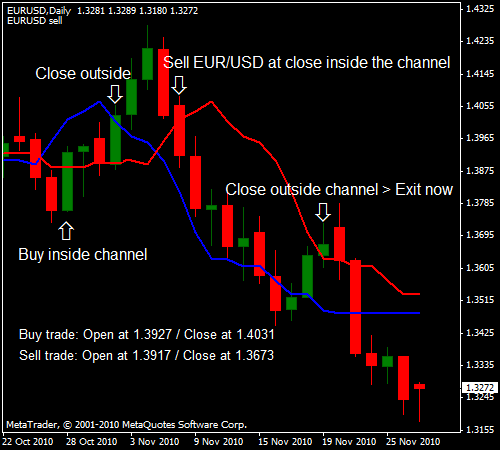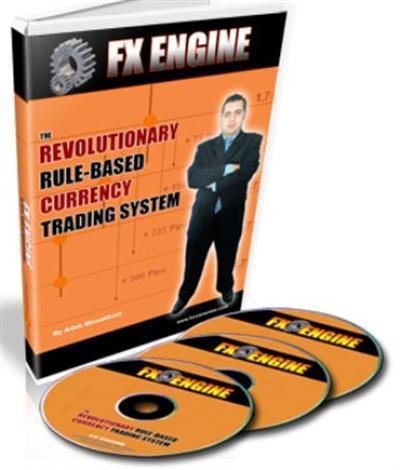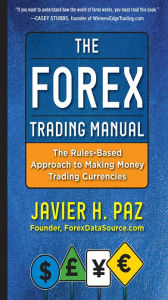Rule based short term trading in forex
A trading system is more than just having a rule or set of rules for when to enter and when to exit a trade.
It is a comprehensive strategy that takes into account six very important factors, not the least of which is your own personality. In this article, we will cover the general approach to creating a rule-based trading system.

To learn more, check out our Trading Systems Tutorial. Examine Your Mindset A Know who you are: When trading the markets, your first priority is to take a look at yourself and note your own personality traits. Examine your strengths and your weaknesses, then ask yourself how you might react if you perceive an opportunity or how you might react if your position is threatened.
This is also known as a personal SWOT analysis. But do not lie to yourself. If you are not sure how you would act, ask the opinion of someone who knows you well.
To learn more, see Does Your Personality Match Your Trading Methods? B Match your personality to your trading: Be sure that you are comfortable with the type of trading conditions you will experience in different time frames. For example, if you have determined that you are not the kind of person who likes to go to sleep with open positions in a market that is trading while you sleep, perhaps you should consider day trading so that you can close out your positions before you go home.
However, you must then be the kind of person who likes the adrenalin rush of constantly watching the computer throughout the day. Do you enjoy being computer-bound? Are you an addictive or compulsive person? Will you drive yourself crazy watching your positions and become afraid to go to the bathroom in case you miss a tick? If you are not sure, go back and re-audit your personality to be certain. Unless your trading style matches your personality, you will not enjoy what you are doing and you will quickly lose your passion for trading.
For more, see Day Trading: Plan your trade so you can trade your plan. Preparation is the mental dry run of your potential trades - a kind of dress rehearsal.
By planning your trade in advance, you are setting the ground rules, as well as your limits. Do not become emotionally involved in your trade.
It does not matter whether you are wrong or right. What matters, as George Soros says, is that "you make more money when you are right than what you lose when you are wrong.
It is a matter of training yourself to accept that not every trade can be a winning trade, and that you must accept small losses gracefully and move on to the next trade.
This means that you have to know when to buy and sell. Base your decisions on your pre-planned strategy and stick to it. Sometimes you will cut out of a position only to find that it turns around and would have been profitable had you held on to it. But this is the basis of a very bad habit.
Don't ignore your stop losses - you can always get back into a position. You will find it more reassuring to cut out and accept a small loss than to start wishing that your large loss will be recouped when the market rebounds. This would more resemble trading your ego than trading the market. When it comes to trading, patience truly is a virtue. Learn to sit on your hands until the market gets to the point where you have drawn your line in the sand.
If it does not get to your entry point, what have you lost? There is always going to be an opportunity to make gains another day. For tips on patient investing, read Patience Is A Trader's Virtue.
G Have realistic expectations: What is a realistic expectation? Most of them achieve much less than that and are well-paid to do so. For more, see Gauge Portfolio Performance By Measuring Returns. Identify Your Mission and Set Your Goals A With anything in life, if you don't know where you are going, any road will take you there. In terms of investing, this means you must sit down with your calculator and determine what kind of returns you need to reach your financial goals.
B Next, you must start to understand how much you need to earn in a trade and how often you will have to trade to achieve your goals. Don't forget to factor in losing trades. This can bring you to the realization that your trading methodology may be in conflict with your goals. Therefore, it is critical to align your methodology with your goals. So how many pips can you expect to earn per trade?
Take your last 20 trades and add up the winners and losers and then determine your profits. Use this to forecast the returns on your current methodology.
Once you know this information, you can figure out if you can achieve your goals and whether or not you are being realistic. To learn more, see How Does Leverage Affect Pip Value? Ensure You Have Enough Money A Cash is the fuel needed to start trading and without enough cash, your trading will be hampered by a lack of liquidity.
But more important, cash is a cushion against losing trades.
Short Term Trading Tactics - Avoid False Breakouts
Without a cushion, you will not be able to withstand a temporary drawdown or be able to give your position enough breathing space while the market moves back and forth with new trends. B Cash cannot come from sources that you need for other important events in your life, such as your savings plan for your children's college education.
Cash in trading accounts is " risk " money. Also known as risk capital, this money is an amount that you can afford to lose without affecting your lifestyle. Consider trading money as you would vacation savings.
You know that when the vacation is over the money will be spent and you are OK with that. Trading carries a high degree of risk. Treating your trading capital as vacation money does not mean that you are not serious about protecting your capital, rather it means freeing yourself psychologically from the fear of losing so that you can actually make the trades that will be necessary to grow your capital.
Advanced strategy #10 (Trend Line Trading Strategy) | Forex Strategies & Systems Revealed
Again, perform a personal SWOT analysis to be sure the necessary trading positions aren't contrasting with your personality profile. Select a Market That Trades Harmoniously A Pick a currency pair and test it over different time frames.
Start with the weekly charts, then proceed to daily, four-hour, two-hour, one-hour, minute, minute and five-minute charts. Try to determine whether the market turns at strategic points most of the time, such as at Fibonacci levels , trendlines or moving averages. This will give you a feeling of how the currency trades in the different time frames.
B Set up support and resistance levels in different time frames to see if any of these levels cluster together. For example, the price at Fibonacci extension on the weekly time frame may also be the price at a 1.
Dubai Professional Forex Trader Course | Online Trading Academy
Such a cluster would add conviction to the support or resistance at that price point. To learn more, see Advanced Fibonacci Applications.
Repeat this exercise with different currencies until you find the currency pair that you feel is the most predictable for your methodology. C Remember, passion is key to trading. The repeated testing of your set-ups requires that you love what you are doing. With enough passion you will learn to accurately gauge the market.
D Once you have a currency pair that you feel comfortable with, start reading the news and the comments regarding the particular pair you have selected. Try to determine if the fundamentals are supporting what you believe the chart is telling you. For example, if gold is going up, that would probably be good for the Australian dollar, since gold is a commodity that is generally positively correlated to the Australian dollar. If you think gold is going to go down, then wait for the appropriate time on the chart to short the Aussie.
Look for a line of resistance to be the appropriate line in the sand to get timing confirmation before you make the trade. Test Your Methodology for Positive Results A This step is probably what most traders really think of as the most important part of trading: A system that enters and exits trades that are only profitable. No losses - ever. Such a system, if there were one, would make a trader rich beyond his wildest dreams.
But the truth is, there is no such system. There are good methodologies and better ones and even very average methods that can all be used to make money.
The performance of a trading system is more about the trader than it is about the system.
Sam Seiden: Short Term Day Trading in ForexA good driver can get to his destination in virtually any vehicle, but an untrained driver will probably not make it, no matter how great fast the car is. Sometimes the best system is a mixture of methods. To learn more, read Blending Technical And Fundamental Analysis. B Having said the above, it is necessary to pick a methodology and implement it many times in different time frames and markets to measure its success rate.
C Personally, I like to use a system that has the highest reward to risk, which means that I tend to look for turning points at support and resistance levels because these are the points where it is easiest to identify and quantify the risk. Support is not always strong enough to stop a falling market, nor is resistance always strong enough to turn back an advance in prices. However, a system can be built around the concept of support and resistance to give a trader the edge required to be profitable.
D Once you have designed your system, it is important to measure its expectancy or reliability in various conditions and time frames. If it has a positive expectancy it produces more profitable trades than losing trades it can be used as a means to time entry and exit in the markets. Measure Your Risk-to-Reward Ratios and Set Your Limits A The first line in the sand to draw is where you would exit your position if the market goes against you.
This is where you will place your stop loss. B Calculate the number of pips your stop is away from your entry point.

Use a pip calculator if you are trading in cross currencies to make it easy to get the value of a pip. C Calculate the percentage your stop loss would be as a percentage of your trading capital. To overcome this, you must reduce your trading size from a standard lot to a mini-lot.
For more on minis, see Forex Minis Shrink Risk Exposure. D Now draw a line on your chart where you would want to take profit. Be sure this is at least 40 pips away from your entry point.
This will give you a 2: Since you cannot know for sure if the market will reach this point, be sure to slide your stop to breakeven as soon as the market moves beyond your entry point.
At worst, you will scratch your trade and your full capital will be intact. E If you get knocked out on your first attempt, don't despair. Often it is your second entry that will be correct. It is true that "the second mouse gets the cheese. You can then catch profits the second time around. Summary By fusing psychology, fundamentals, a trading methodology and risk management, you'll have the tools to select an appropriate currency pair. All that is left to do is repeatedly practice trading until the strategy is ingrained in your psyche.
With enough passion and determination, you will become a successful trader.
Forex Training: Building A Rules Based Trading Strategy [Tags: FOREX STRATEGIES Based Building Forex Rules strategy Trading training] | Pinterest | Trading str…
For more, check out our Forex Trading Guide. Dictionary Term Of The Day. A measure of what it costs an investment company to operate a mutual fund. Latest Videos PeerStreet Offers New Way to Bet on Housing New to Buying Bitcoin? This Mistake Could Cost You Guides Stock Basics Economics Basics Options Basics Exam Prep Series 7 Exam CFA Level 1 Series 65 Exam. Sophisticated content for financial advisors around investment strategies, industry trends, and advisor education. These steps will make you a more disciplined, smarter and, ultimately, wealthier trader.
Most brokers will provide you with trade records, but it's also important to keep track on your own.

Position sizing will account for the quickest and most magnified returns that a trade can generate. A balance sheet and cash flow statement will help you understand where you stand financially. Life is unpredictable, but if there's anything you can do to stave off disaster, it's to be prepared and be careful.
Find out what you can do to prepare and cope in tough economic times. An expense ratio is determined through an annual A hybrid of debt and equity financing that is typically used to finance the expansion of existing companies. A period of time in which all factors of production and costs are variable. In the long run, firms are able to adjust all A legal agreement created by the courts between two parties who did not have a previous obligation to each other.
A macroeconomic theory to explain the cause-and-effect relationship between rising wages and rising prices, or inflation.
A statistical technique used to measure and quantify the level of financial risk within a firm or investment portfolio over No thanks, I prefer not making money. Content Library Articles Terms Videos Guides Slideshows FAQs Calculators Chart Advisor Stock Analysis Stock Simulator FXtrader Exam Prep Quizzer Net Worth Calculator. Work With Investopedia About Us Advertise With Us Write For Us Contact Us Careers.
Get Free Newsletters Newsletters. All Rights Reserved Terms Of Use Privacy Policy.